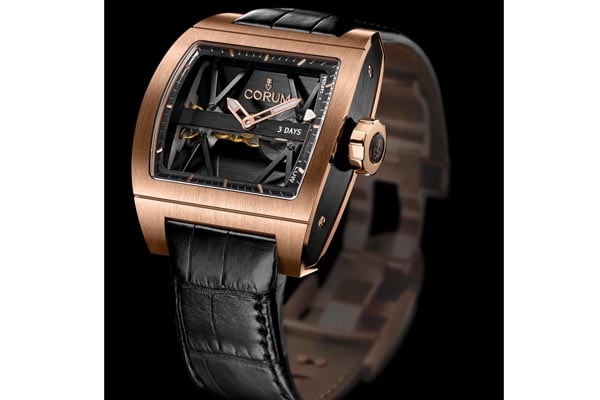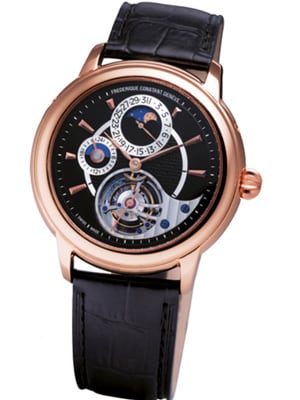
The Brewing Storm for Swiss Watch Industry
Under the booming sales figures of the Swiss watch industry, the makings of a crisis can be seen
The Swiss watch industry is firing on all cylinders, struggling to keep up supply to an insatiable global appetite for its products. Watches across all price segments ranging from a few hundred to tens of thousands of dollars are being lapped up by customers.
But beneath this booming façade lie the seeds of an impending crisis.
Starting this year the Swatch Group is going to cut down on supplies of movements – the core timekeeping engine inside a watch – to brands that it does not own. Now Swatch is not only the biggest maker of watches but also of movements, through its wholly owned division ETA. With a market share of nearly 80 percent, ETA’s movements are the invisible hearts that power millions of Swiss watches.
By cutting down supplies to outsiders, Swatch wants to divert more movements to its own brands. It also claims that many of its movement customers were secretly reselling them in Hong Kong from where they ended up inside fake Swiss watches.
Whatever the reason, most of the industry is concerned about how this squeeze will affect them.
That’s because the Swiss watch industry had historically been horizontally integrated with a dense and closely knit ecosystem in which “établisseurs” assembled, branded and sold watches made with components bought from various specialists.
That changed during the Swiss fightback to the Japanese Quartz threat during the 1980s. On the verge of bankruptcy two of the largest watch makers – ASUAG and SSIH - merged to form a massive vertically integrated unit to fight the Japanese using economies of scale and their own cheap quartz watches. They did so based on a report created by the late Nicolas Hayek, who within a year ended up acquiring a controlling stake in the combined entity which would later be renamed as the Swatch Group. Staying true to his vision of large scale vertical integration, Hayek kept on acquiring watch and movement makers over the years.
But ironically as Swatch’s movement making division ETA became bigger and bigger, its competitors strangely kept increasing their reliance on it as a supplier. They bought ETA movements in bulk, fitted them inside fancy cases while adding a few complications of their own around it. The finished watches sold for thousands of dollars.
The list of non-Swatch brands that used ETA movements covers practically the entire Swiss industry ranging from Tag Heuer, Breitling, Vacheron Constantin, Cartier, Hublot etc.
Now it’s possible Swatch’s competitors got lulled into a false sense of comfort in trusting their competitor wholly to provide such a crucial part of their products, thinking maybe that horizontal integration was what Swiss watchmaking was about. Or it could be the killer profit margins they were making on their watches without having to invest tens of millions of dollars on creating and producing their own movements.
One line of argument also faults the Swiss government for allowing the merger of lots of independent movement makers into the large, vertically integrated and virtually monopolistic Swatch Group which had to, at some point, watch out for its own profits over that of its competitors.
With Swatch expected to reduce movement sales to third party brands by as much as 12 percent this year, most brands are scrambling to create and produce more of their own movements.
“The market has changed. Ten years back the ETA movement might have been enough but today if you don’t have your own movement then you will not survive in this industry for too long,” says Antonio Calce, the CEO of Corum. He says over half of Corum’s turnover comes from the company’s own (and highly regarded “bridge” movement).

Corum Ti-Bridge Power Reserve
Peter Stas, the founder and COO of Frederique Constantin, one of the fastest growing brands in the $1000-5000 space, says he wants to increase the percentage of watches that carry his own in-house movements from 15 to 25 percent in the near future.

Frederique Constant Heart Beat Manufacture
So is Carl Bucherer, another independent brand that sells watches nearer the $10,000 price. “We’re increasing the use of our own caliber in more of our collections, besides ramping up their production,” said David Vallata, its Executive Vice-President.

Carl F Bucherer EvoTec Power Reserve
But while larger and more established brands can afford to invest time and money in setting up their own movement production, niche brands will find it tougher to justify either.
While it’s possible some may bunch together to create a common movement production, many others may have to either shut down or sell out.
The buyers will of course, be the Chinese.
Over the last decade China has been ramping up its production and mastery over watchmaking – both quartz and mechanical – at the same rate at which its consumers buy Swiss watches.
Today it is by far the largest producer of watches in the world, selling 682 million units in 2011 compared to 29.8 million from the Swiss. That is only one side of the story though, because when it comes to value it notched up only $3.7 billion compared to the $21.8 billion the Swiss managed.
But like they always do, the Chinese are diligently plodding away at moving higher up the value chain. While on one hand brands like Fiyta and Sea Gull (which is also a large movement maker) are trying to get consumers to buy into the idea of a complicated mechanical wrist watch that says “Made in China” instead of “Swiss Made”, on the other Chinese companies are also buying up Swiss makers like Eterna and Montres Chouriet.


The Chinese Invasion
Correction: This article has been updated. Zenith does not use ETA movements as stated earlier in our article.




